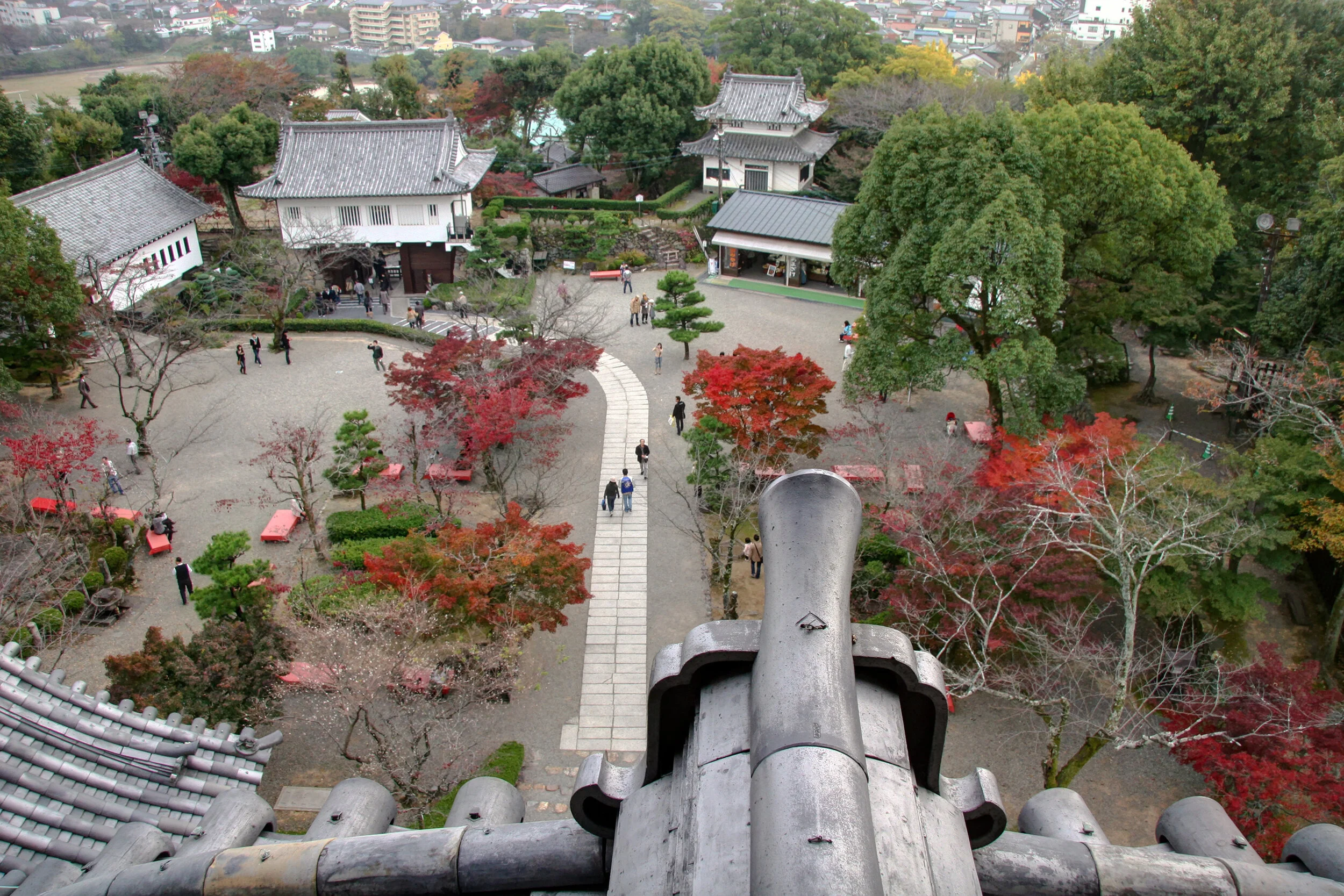
Page 2 of 10
Inuyama, Japan
Don't take it too bad it's nothing you did, just once something dies you can't make it live
Before I was born (although not all that long before I was born), Frank Lloyd Wright's landmark and iconic Imperial Hotel in Tokyo was demolished, removed and wiped clean off the face of the earth. Or perhaps not. It turns out that a small but very important part of the building was preserved, then removed and rebuilt at the Museum Meiji-Mura, an intentional ghost town theme park that hides rather well in the hills near Lake Iruka outside of Inuyama, Japan. And while the partially rebuilt Imperial Hotel may now in fact be wildly out of context and only a small part of its original size, to see whatever piece or pieces remain is still amazing and easily worth all of the trouble that a pilgrimage out to Inuyama and Meiji-Mura require.
A view of the reconstructed entry, or rather what remains of the reconstructed entry. The doors are on the left and the great unknown (or rather a amputated wound covered up with a blank exterior wall) is just beyond the red curtain on the right, as multiple, complex, non barrier free levels spiral about in all directions. A really fun space (despite its suspiciously non Wrightian flat white ceiling), especially once you get to spend some time inside.
The exterior entry court that remains includes a fountain (just like the original) but is missing both rather large hotel wings that flanked it on either side, and of course a few more things like actual hotel guests and a chaotic city waiting in all directions at the end of the driveway.
Up until about a month before I left for Japan, I had not known or realized that any of the Imperial Hotel survived, and was shocked (yes shocked) to find out as I researched Japan for this trip that it not only existed but that anyone with a camera, some yen and the time and desire to do so could still see a building (or rather a small part of a building) that I truly thought was lost to time.
It is not easy to get to Inuyama, especially if you don't speak or read or understand Japanese. From Nagoya (the closest major city and one within far striking distance of Tokyo Narita), it is about an hour on a commuter railway, a train which did not accept my Japan Rail Pass and required me to actually figure out how to use the Japanese (language) only ticket machines. From Inuyama City, it's another half hour on a bus with no English instructions and little (if any) indication that you are on the right road or heading the right direction or even if you are on the right bus. Eventually once I got to the gate of Meiji-Mura I was not only unusually happy to stand once again inside a fallen Wright landmark (it was as nice or nicer than I hoped), but I was also unusually proud that I was able to find the way all the way there all by myself. It apparently doesn't take all that much to make me happy.
Meiji-Mura is more than just the resurrected Imperial Hotel, even if that is all that I came all that way to see. There are rebuilt buildings and parks and buses and artifacts primarily from Japan's Meiji era, a time when western influenced buildings started to be built among traditional Japanese construction. All of the buildings are now in a park like setting and all are eerily empty, unless you count the Japanese tourists and me who were wandering among the reconstructed ruins- the park is far enough off the beaten (or any) path and does not attract many (ok, any) out of country tourists, or at least that was the case on the afternoon that I was there.
I didn’t go all that way to not take a lot of pictures. Ladies and Gentlemen, this is (what’s left of) the Imperial Hotel.
A view of what else there is to see, or at least a part of it. High up on a hill is a piece of Tokyo's Kawasaki Bank building, built in 1927 and demolished (or at least partly demolished) sometime after. The building at Meiji-Mura actually includes a stair you can climb to see the upper floors and the view from the top of the hill, where the context and the view of Lake Iruka is just a little different from the building's original site.

